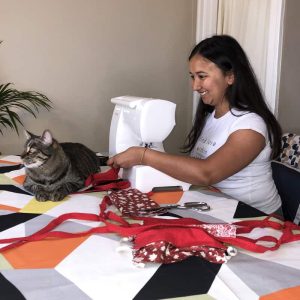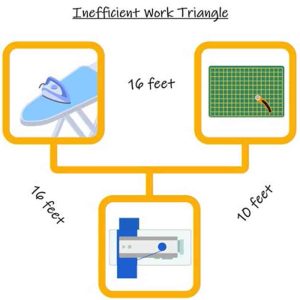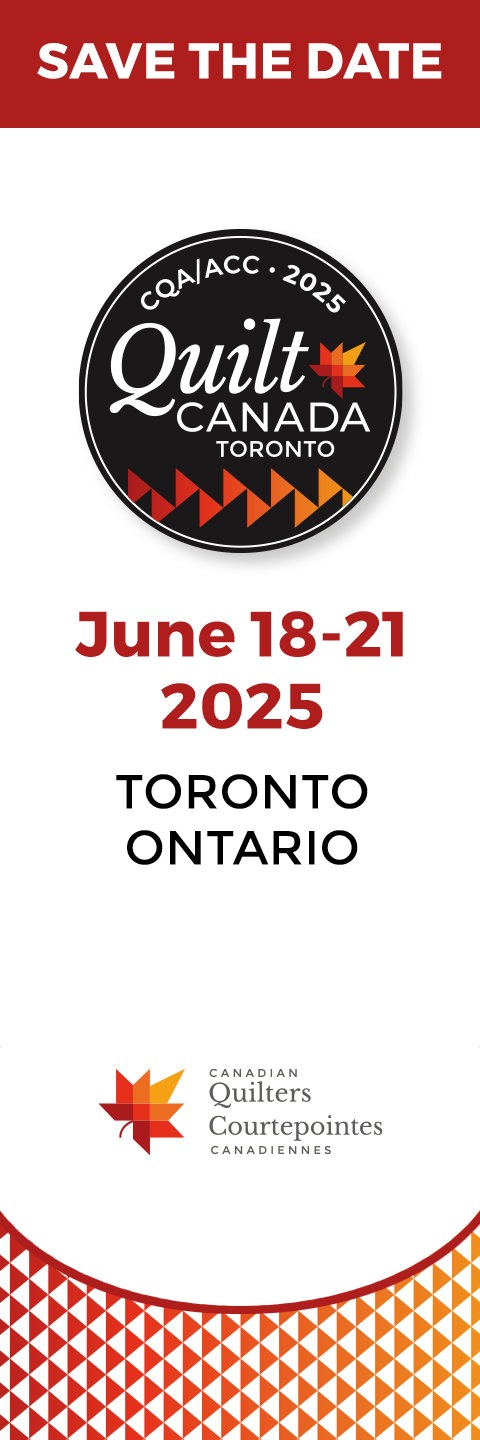The last few months have transformed sewers into full-time mask-making machines. Not just quilters, but people who haven’t used their sewing machines in years are pitching in to help keep their communities safe. Since this is a marathon and not a sprint, it’s important to consider not just what you sew, but how. Good ergonomics and small changes will keep you sewing for years to come. 
Benjy is in charge of quality control when Anindita sews facemasks.
Ergonomics is the study of working comfortably and efficiently. Three key factors are: areas of concern (cutting, pressing, sewing zones); risk factors (awkward positions, action frequency and duration, force applied); and areas affected (your muscles and joints). Where, how and when we cut, press and sew can determine how many more years we will be able to do so comfortably. In upcoming months, we will examine strategies to improve each of these areas. For now, let’s start with the ‘where’ of your workstations or zones.
The work triangle is key to designing your sewing studio. An efficient work triangle eliminates wasted effort and time by keeping the zones close to each other. For example, your stove, sink and refrigerator make up a work triangle. Experts suggest that any side of the triangle be between four to nine feet and the total of all three sides be between 13 to 26 feet. So why does my example above look so out of whack? I recommend an inefficient sewing studio; likewise for your printer and desk. That means that your ironing board or cutting mat is not directly beside your sewing machine. The longer the distances between workstations, the better. If your work area is small, put your ironing board in another room. Bonus points for putting it on a different floor.
 In an inefficient work triangle, the longer the distances between workstations, the better.
In an inefficient work triangle, the longer the distances between workstations, the better.
Being forced to move is a good thing as muscles that remain in the same position tire faster as circulation decreases, leaving you stiff and sore. Remember that a change is as good as a rest. Switching activities and changing position allows working muscles, joints and tissues to rest and recover. To prevent discomfort, fatigue and injury, just stand, stretch, sew, repeat.
For more helpful information about keeping your body at its quilting best, visit Healthy Quilting.


